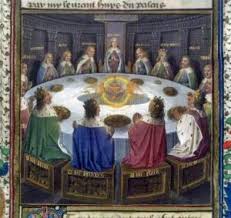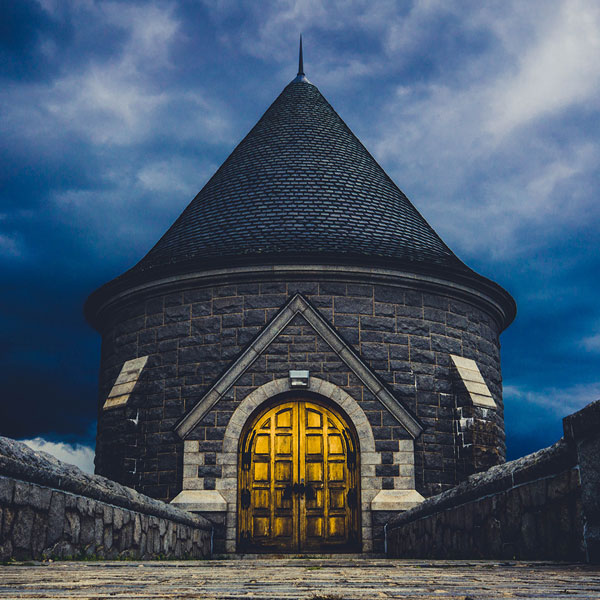The Rich and Resonant Tapestry of Medieval Myth and Legend
Many of us were raised on the deeply magical tales of King Arthur, Merlin, Camelot, Holy Grail, Excalibur, Morgana Le Faye and the Knights of the Round Table. They became fertile inspiration for our imaginative play and a rich tapestry of fantasy for us to feast upon. For many, they still have a place deep our adult hearts and minds. But what are the historical connections behind these myths and why do these stories have such a powerful and magnetic attraction?
The Arthurian legends took shape over hundreds of years and the versions that we know and love today, have their influence in a variety of different sources. The earliest forms are blended Celtic history and myth. Although there is no concrete evidence to support the fact that King Arthur ever existed, several early histories of Britain do mention him. There is a belief among some scholars that he may have been a Celtic war leader who helped defend Britain against Anglo-Saxon invaders in the AD 400 S or 500 S.

The role of Celtic mythology in the early Arthurian legends is much more certain. Many of the people associated with Arthur can be linked to older myths. One belief is that Arthur may be based on the legendary Welsh priest-king Gwydion and Merlin on the character of Myrddin, who appears as both a prophet and a trickster in Welsh and Scottish lore.
King Arthur, like many heroes of myth and legend, was said to be born of royal birth and needed to overcome the challenge of his enemies to establish his claim to the throne. Arthur became King by pulling the enchanted sword Excalibur from a stone, a token of power similar to many magical devices in mythology. Many of the noblemen he defeated were so impressed by his brave heart and noble deeds that they swore an ongoing loyalty and allegiance to him.
The mythology describes Arthur’s upbringing under the influential tutorage of the wizard Merlin, who later served as his chief advisor. His half -sister and Priestess of Avalon, Morgana le Faye, was also a powerful magical figure who appeared in these stories. Arthur was surrounded by devoted followers, many of them courtly knights, as well as his wife Guinevere. Gawain, Galahad, and Lancelot are three of the most prominent personalities – all with strengths and weaknesses. The Knights of the Round Table, promising their allegiance to the court at Camelot, rode out performing good and brave deeds. The most honourable and challenging of which was the search for the Holy Grail. Only Galahad was pure enough to succeed in this quest.

When Arthur finally fell in battle he was carried away to the sacred island of Avalon, home of the Priestesses of the Goddess, to be healed so that he would be able to return to Britain once again in the future.
Writers during the Middle Ages created new versions of the Arthurian legends and the influence of Christianity soon entered the mythology. A traditional Celtic tale about a search for a magic cauldron, transformed into the quest for the Holy Grail. The medieval concept of chivalry, influenced the code of conduct that inspired the ideology central to the Knights of the Round Table.
In 1136 Geoffrey of Monmouth wrote The History of the Kings of Britain and it was this incredible work that described Arthur as a national hero, linking him with Merlin. The book was hugely successful and despite it being in an age before the printing press, a large number were made and circulated throughout western Europe.
Tales of Arthur have continued to inspire literature and art for centuries. From Sir Thomas Mallory’s Le Morte D’Arthur to T.H. White’s The Once and Future King, to the feminine perspective in the Mists of Avalon by Marion Zimmer Bradley who took one of the oldest stories in Western Civilization and approached it from a fresh angle, retroactively giving power to women. Lord Tennyson wrote the following in his great work ‘The Passing of Arthur, Idylls of the King’.
“But now farewell. I am going a long way
With these thou seest—if indeed I go
(For all my mind is clouded with a doubt)–
To the island-valley of Avilion;
Where falls not hail, or rain, or any snow,
Nor ever wind blows loudly; but it lies
Deep-meadowed, happy, fair with orchard lawns
And bowery hollows crowned with summer sea,
Where I will heal me of my grievous wound.”
The power of the Arthurian legends to live in the hearts and minds of so many people is testament to the sacredness of these stories. They weave powerful initiatory messages of hope and chivalry, of challenges overcome, of beasts and burdens defeated and the promise of meaning and significance to our everyday existence.
Join us as we delve into some of these ancient and mysterious stories next month at The Sound Temple for our next Storytelling Event Myth, Magic and Medieval Romance.

